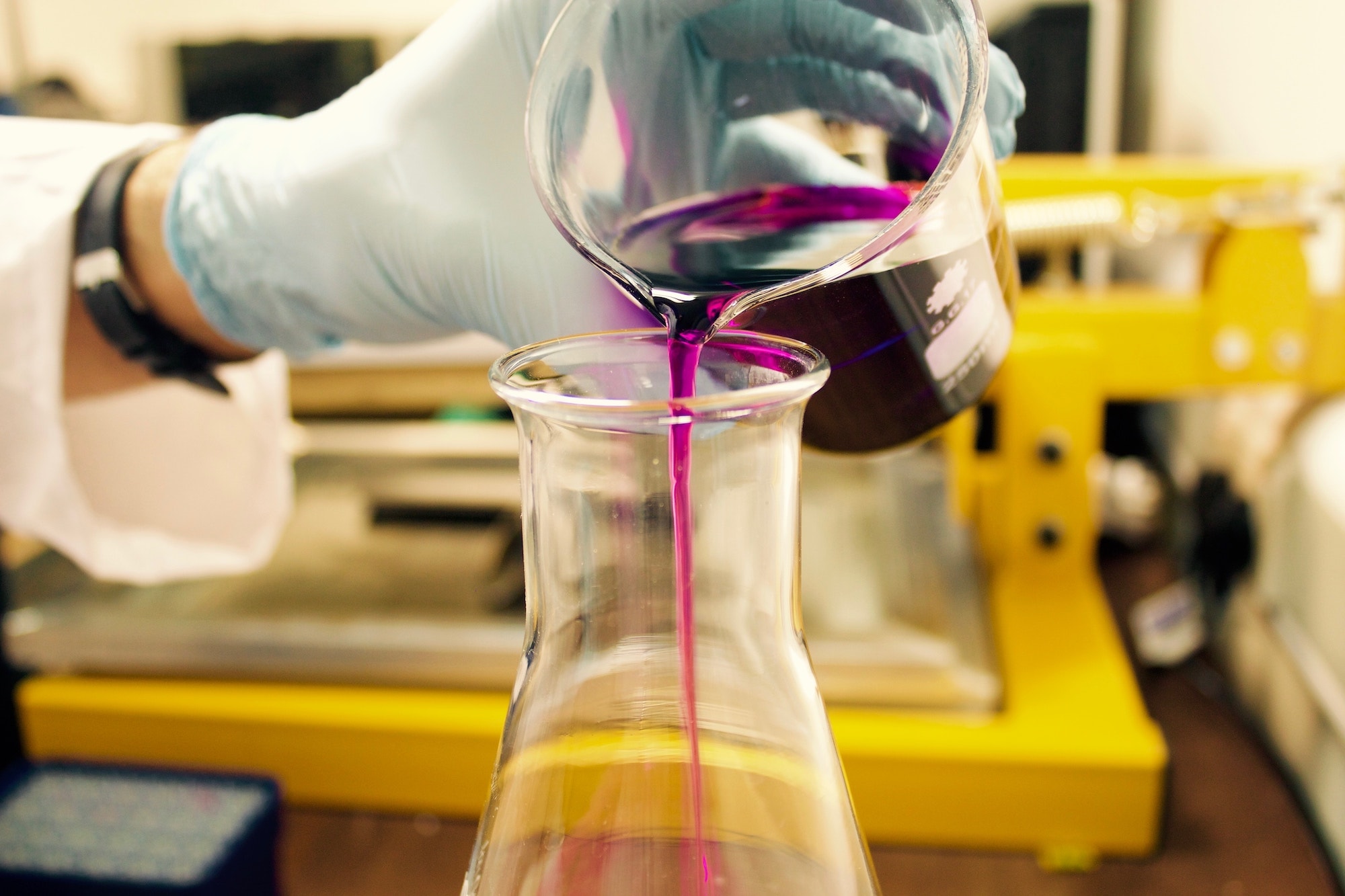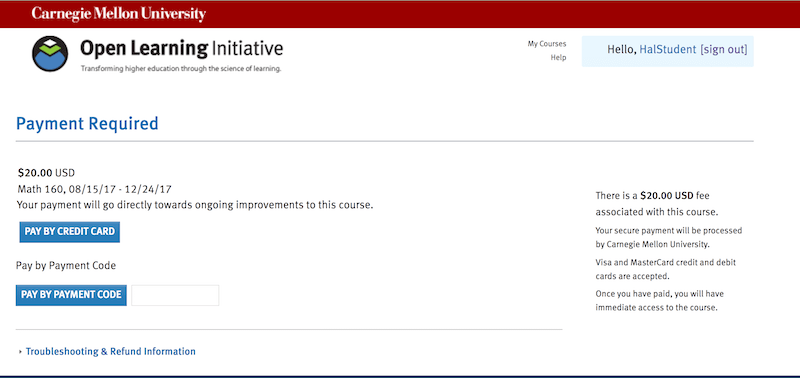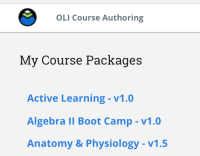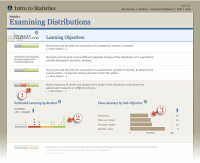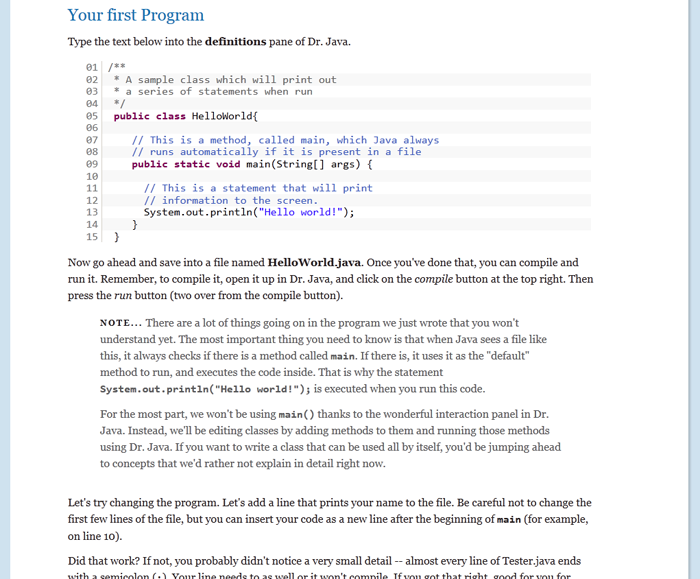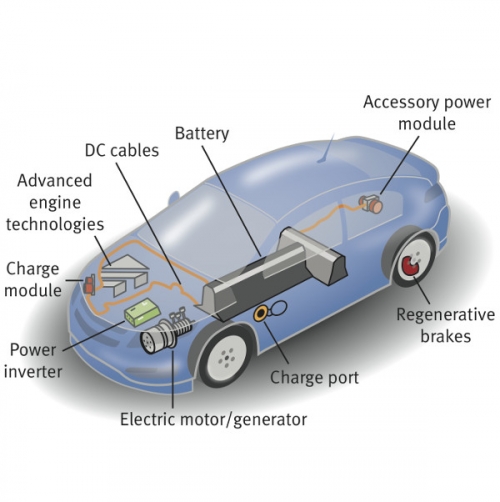General Chemistry 1 is a highly interactive and engaging course that covers all topics typical of first semester General Chemistry. The course includes a multitude of formative practice problems that are scaffolded and include detailed feedback, interactives such as PhET simulations and virtual lab experiments, engaging media elements, and summative assessments.
General Chemistry 1
$25
- Description
- What students will learn
- Learning objectives by module
- Course assessments, activities, and outline
- Other course details
- System requirements
- Included instructor tools
Description
General Chemistry 1 covers all of the topics typically covered in first semester General Chemistry and includes both formative assessments, with high scaffolding, and end of unit and module quizzes. This course offers highly contextualized, engaging content, designed in a logical flow that transitions smoothly between relatively small amounts of expository text, worked examples, activities, interactives, simulations, and other media. The exercises scaffold students through complex problems before moving to less or un-scaffolded practice. The many practice problems provide immediate, detailed feedback and hints as needed.
The course also includes many engaging and interactive elements such as: interactive examples, instructor-led videos demonstrating problem solving methods, problem sets incorporating PhET simulations, and virtual laboratory experiments. Substantial value is added through a coherent learning experience, tagged against a consistent set of learning objectives tied to a common knowledge model.
What students will learn
Coming soon.
Learning objectives by module
Unit: Foundations of Chemistry
Module: Properties of Matter
- Classify matter as element, compound, or mixtures.
- Describe the four states of matter.
- Recognize physical and chemical changes and properties.
Module: Measurements
- Convert among the temperature scales of Fahrenheit, Celsius, and Kelvin.
- Convert units using dimensional analysis.
- Determine the accuracy and precision of sets of data.
- Record measurements and calculations using the correct number of significant figures.
- Use the International System of Units for measurements.
Module: Atomic Theory
- Describe the contributions of John Dalton to modern atomic theory.
- Describe the evolution of the atomic theory.
Module: Elements and Compounds
- Apply the concepts of isotopes and their percent abundance to make calculations associated with atomic mass.
- Describe how chemical bonds form.
- Describe the arrangement of the periodic table of elements.
- Distinguish between molecular and ionic compounds.
- Interpret chemical symbols for isotopes and ions.
- Name chemical compounds.
- Write chemical formulas for compounds.
Unit: Composition of Substances and Solutions
Module: The Mole
- Calculate the percent composition of a compound.
- Convert amounts of substances among moles, particles, and mass.
- Determine formulas for empirical and molecular formulas.
Module: Aqueous Solutions
- Apply concepts of mass percentage, volume percentage, parts per million, and parts per billion.
- Calculate concentrations of solutions that involve molarity.
- Describe aqueous solutions.
Unit: Reactions and Stoichiometry
Module: Chemical Equations
- Represent chemical reactions with chemical equations.
- Describe acid-base reactions.
- Describe oxidation-reduction reactions.
- Describe precipitation reactions.
- Produce balanced oxidation-reduction equations for reactions in acidic or basic solution.
Module: Reaction Stoichiometry
- Apply stoichiometric relationships to calculate amounts of substances involved in chemical reactions.
- Identify limiting reactants in chemical reactions.
- Calculate the percent yield of a chemical reaction.
Unit: Gases
Module : Gas Laws
- Calculate pressure, temperature, volume, or amount of gas by applying the appropriate gas law.
- Make calculations involving gas pressure as it relates to the measurement of gas pressure.
Module: Stoichiometry of Gases
- Apply combined concepts of stoichiometry and the ideal gas law to calculate the amounts of substances in a chemical reaction.
- Apply Dalton’s law of partial pressures.
- Apply stoichiometric relationships to calculate amounts of substances involved in chemical reactions.
Module: The Kinetic-Molecular Theory
- Describe the relationship between molecular velocities, kinetic energy, and molar mass of gases.
- Describe the relationship between the kinetic molecular theory and the gas laws.
- Explain the differences between ideal gases and real gases.
Unit: Thermochemistry
Module: Introduction to Energy
- Calculate internal energy for processes and explain its classification as a state function.
- Describe the nature of energy changes that accompany chemical and physical changes.
Module: Calorimetry
- Calculate heat transferred in chemical and physical processes.
- Distinguish the related properties of heat, thermal energy, and temperature.
Module: Enthalpy
- Calculate enthalpy changes for various chemical reactions.
Unit: Electronic Structure and Periodic Properties
Module: Electromagnetic Energy and the Bohr Model of the Atom
- Describe the Bohr model of the hydrogen atom.
- Describe the particle nature of light.
- Describe the wave nature of light.
Module: Quantum Theory
- Describe the general idea of the quantum mechanical model of the atom.
- List and describe traits of the four quantum numbers that form the basis for completely specifying the state of an electron in an atom.
- Write electron configurations for elements and identify valence electrons from them.
Module: Periodic Properties
- Describe and distinguish between ionization energy and electron affinity.
- Describe and explain the observed periodic trends of atomic and ionic size.
Unit: Chemical Bonding and Molecular Geometry
Module: Ionic and Covalent Bonding
- Assess the polarity of covalent bonds.
- Describe covalent bond formation.
- Describe ionic bond formation.
Module: Lewis Structures
- Draw Lewis structures depicting the bonding in molecules.
- Explain the concept of resonance and draw Lewis structures representing resonance forms for a given molecule.
- Use average covalent bond energies to estimate enthalpies of reactions.
- Use formal charges to identify the most reasonable Lewis structure for a given molecule.
Module: Molecular Structure and Polarity
- Assess the polarity of a molecule based on its bonding and structure.
- Predict the structures of small molecules using valence shell electron pair repulsion (VSEPR) theory.
Module: Advanced Theories of Covalent Bonding
- Apply the concept of Covalent Bond Theory to describe covalent bonds in molecules.
- Apply the concept of hybridization to describe covalent bonds.
Unit: Solids and Liquids
Module: Intermolecular Forces
- Describe the roles of intermolecular attractive forces in viscosity, surface tension, and capillary rise.
- Describe the types of intermolecular forces possible between atoms or molecules in condensed phases.
- Identify the types of intermolecular forces experienced by specific molecules based on their structures.
Module: Phase Changes
- Describe the processes represented by typical heating and cooling curves, and compute heat flows and enthalpy changes accompanying these processes.
- Explain the relation between phase transition temperatures and intermolecular attractive forces.
- Use phase diagrams to identify stable phases at given temperatures and pressures, and to describe phase transitions resulting from changes in these properties.
- Apply the Clausius-Clapeyron Equation to calculate vapor pressure.
Module: The Solid State of Matter
- Define and describe the bonding and properties of ionic, molecular, metallic, and covalent network crystalline solids.
- Describe the arrangement of atoms and ions in crystalline structures.
- Compute ionic radii using unit cell dimensions.
- Explain the use of X-ray diffraction measurements in determining crystalline structures.
Unit: Solutions
Module: Solubility
- Describe the basic properties of solutions and how they form.
- Describe the solubility of gases, liquids, and solids in liquids.
- Explain solute-solvent interactions of ionic and covalent electrolytes.
- Describe the composition and properties of colloidal dispersions.
Module: Colligative Properties
- Express concentrations of solution components using mole fraction and molality.
- Perform calculations using the mathematical equations that describe various colligative effects.
- Use colligative properties to calculate molar mass.
- Describe differences in colligative properties of electrolytes.
Course assessments, activities, and outline
UNIT 1: Foundations of Chemistry
Module 1: Course Introduction
Module 2: Properties of Matter
QUIZ: Properties of Matter
Module 3: Measurements
QUIZ: Measurements
Module 4: Atomic Theory
QUIZ: Atomic Theory
Module 5: Elements and Compounds
QUIZ: Elements and Compounds
UNIT 2: Reactions and Stoichiometry
Module 6: Introduction
Module 7: The Mole
QUIZ: The Mole
Module 8: Aqueous Solutions
QUIZ: Aqueous Solutions
Module 9: Chemical Equations
QUIZ: Chemical Equations
Module 10: Reaction Stoichiometry
QUIZ: Reaction Stoichiometry
Module 11: Reactions and Stoichiometry: Unit Practice
UNIT 3: Gases
Module 12: Introduction
Module 13: Gas Laws
QUIZ: Gas Laws
Module 14: Stoichiometry of Gases
QUIZ: Stoichiometry of Gases
Module 15: The Kinetic-Molecular Theory
QUIZ: The Kinetic Molecular Theory
UNIT 4: Thermochemistry
Module 16: Introduction
Module 17: Introduction to Energy
QUIZ: Introduction to Energy
Module 18: Calorimetry
QUIZ: Calorimetry
Module 19: Enthalpy
QUIZ: Enthalpy
UNIT 5: Electronic Structure and Periodic Properties
Module 20: Introduction
Module 21: Electromagnetic Energy and the Bohr Model of the Atom
QUIZ: Electromagnetic Energy and the Bohr Model of the Atom
Module 22: Quantum Theory
QUIZ: Quantum Theory
Module 23: Periodic Properties
QUIZ: Periodic Properties
Module 24: Electronic Structure and Periodic Properties: Unit Practice
UNIT 6: Chemical Bonding and Molecular Geometry
Module 25: Introduction
Module 26: Ionic and Covalent Bonding
QUIZ: Ionic and Covalent Bonding
Module 27: Lewis Structures
QUIZ: Lewis Structures
Module 28: Molecular Structure and Polarity
QUIZ: Molecular Structure and Polarity
Module 29: Advanced Theories of Covalent Bonding
QUIZ: Advanced Theories of Covalent Bonding
UNIT 7: Solids and Liquids
Module 30: Introduction
Module 31: Intermolecular Forces
QUIZ: Intermolecular Forces
Module 32: Phase Changes
QUIZ: Phase Changes and Diagrams
Module 33: The Solid State of Matter
QUIZ: The Solid State of Matter
UNIT 8: Solutions
Module 34: Introduction
Module 35: Solubility
QUIZ: Solubility
Module 36: Colligative Properties
QUIZ: Colligative Properties
UNIT 9: Appendix
Module 37: Appendix
Other course details
System requirements
OLI system requirements, regardless of course:
- internet access
- an operating system that supports the latest browser update
- the latest browser update (Chrome recommended; Firefox, Safari supported; Edge and Internet Explorer are supported but not recommended)
- pop-ups enabled
- cookies enabled
Some courses include exercises with exceptions to these requirements, such as technology that cannot be used on mobile devices.
This course’s system requirements:
Included instructor tools
Instructors who teach with OLI courses benefit from a suite of free tools, technologies, and pedagogical approaches. Together they equip teachers with insights into real-time student learning states; they provide more effective instruction in less time; and they’ve been proven to boost student success.

